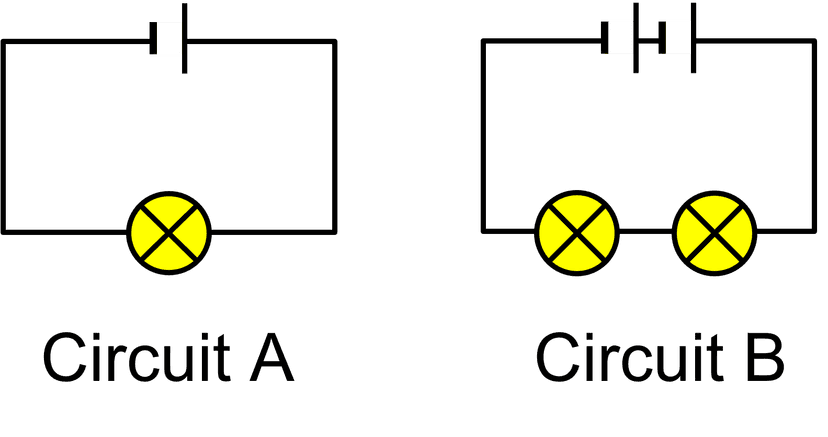Myths about teaching can hold you back


- Year 11•
- AQA•
- Higher
Calculating with electric charge: including complex calculations
I can explain the equations: I = Q ÷ t, V = E ÷ Q, P = I × V, and V = I × R, and use them in calculations.


- Year 11•
- AQA•
- Higher
Calculating with electric charge: including complex calculations
I can explain the equations: I = Q ÷ t, V = E ÷ Q, P = I × V, and V = I × R, and use them in calculations.
These resources were made for remote use during the pandemic, not classroom teaching.
Switch to our new teaching resources now - designed by teachers and leading subject experts, and tested in classrooms.
Lesson details
Key learning points
- Electric charge, Q, is measured in coulombs (C).
- Electric current is a measure of the rate of flow of electric charge, calculated using: I = Q ÷ t.
- Potential difference is a measure of the energy transferred by each coulomb of charge, calculated using: V = E ÷ Q.
- Combining I = Q ÷ t and V = E ÷ Q gives the equation: E ÷ t = I × V. This is equivalent to P = I × V.
- Unknown variables in the power equation can often be calculated using: I = V ÷ R.
Keywords
Electric current - an electrical property; it can either be positive or negative
Coulombs (C) - the unit of electric charge
Electric current - the amount of electric charge flowing past a point in a circuit each second
Potential difference (p.d.) - the amount of energy transferred by each coulomb of charge, passing between two points in a circuit
Power - the amount of energy transferred each second
Common misconception
Understanding electrical circuits is about memorising equations and procedures.
Give pupils the opportunity to discuss what happens in a circuit before they attempt to answer questions about it.
To help you plan your year 11 physics lesson on: Calculating with electric charge: including complex calculations, download all teaching resources for free and adapt to suit your pupils' needs...
To help you plan your year 11 physics lesson on: Calculating with electric charge: including complex calculations, download all teaching resources for free and adapt to suit your pupils' needs.
The starter quiz will activate and check your pupils' prior knowledge, with versions available both with and without answers in PDF format.
We use learning cycles to break down learning into key concepts or ideas linked to the learning outcome. Each learning cycle features explanations with checks for understanding and practice tasks with feedback. All of this is found in our slide decks, ready for you to download and edit. The practice tasks are also available as printable worksheets and some lessons have additional materials with extra material you might need for teaching the lesson.
The assessment exit quiz will test your pupils' understanding of the key learning points.
Our video is a tool for planning, showing how other teachers might teach the lesson, offering helpful tips, modelled explanations and inspiration for your own delivery in the classroom. Plus, you can set it as homework or revision for pupils and keep their learning on track by sharing an online pupil version of this lesson.
Explore more key stage 4 physics lessons from the Mains electricity unit, dive into the full secondary physics curriculum, or learn more about lesson planning.

Licence
Prior knowledge starter quiz
6 Questions
Q1.Match each of the following quantities to their correct definitions.
current -
charge flowing past a point in a circuit per second
electric charge -
a property that can either be positive or negative
potential difference -
energy transferred per unit charge passing between two points
Q2.Match each of the following quantities to the correct measurement units.
current -
A
energy -
J
potential difference -
V
power -
W
Q3. is the amount of energy transferred per second.
Q4.A metal is made of ions and free electrons. What is the charge on the ions?
Q5.In circuits A and B, all of the cells are identical and all of the lamps are identical. Which of the following statements are correct?

Q6.A mains appliance has a current of 3.50 A through it. The power of the appliance is W (to 3 sf).
Assessment exit quiz
6 Questions
Q1.An ammeter shows a steady reading of 1 A. Which of the following statements describes what this means?
Q2.Match the following symbols for quantities to the symbols used for their units.
$$E$$ -
J
$$I$$ -
A
$$P$$ -
W
$$Q$$ -
C
$$t$$ -
s
$$V$$ -
V

